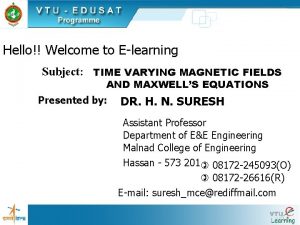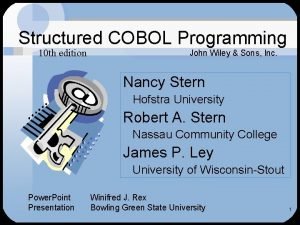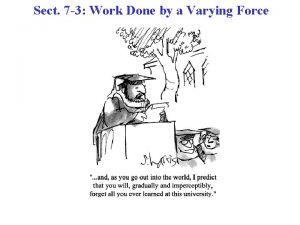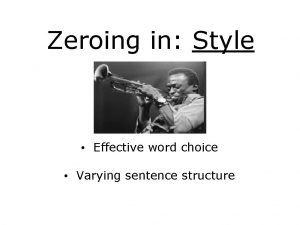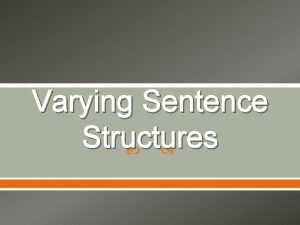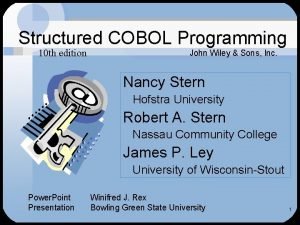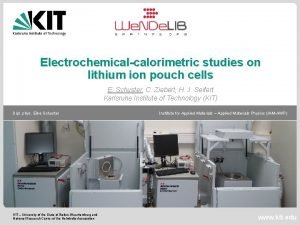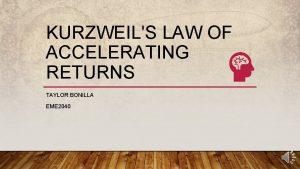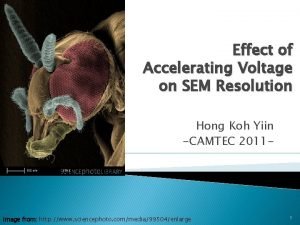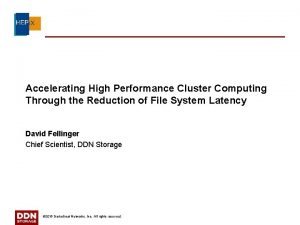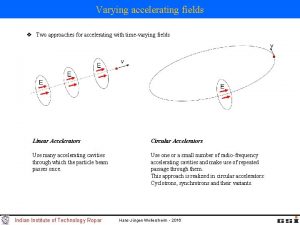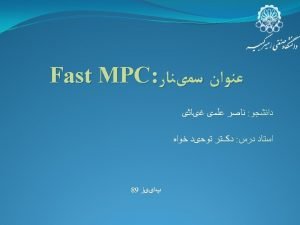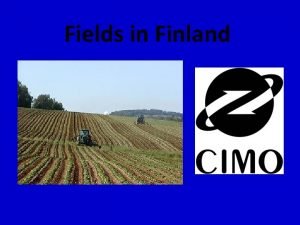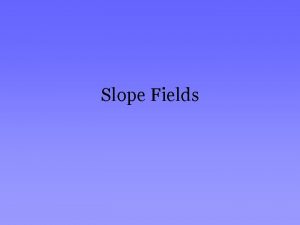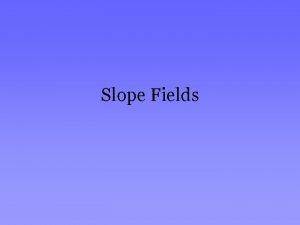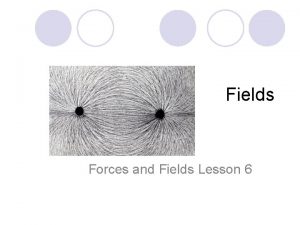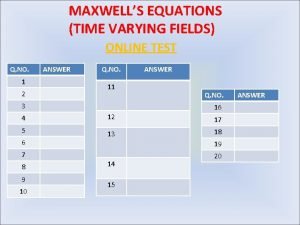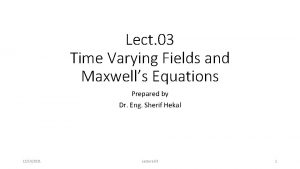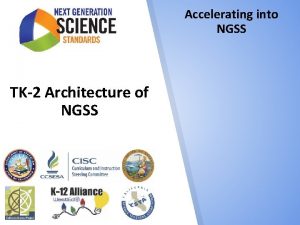Varying accelerating fields v Two approaches for accelerating
















- Slides: 16

Varying accelerating fields v Two approaches for accelerating with time-varying fields Linear Accelerators Circular Accelerators Use many accelerating cavities through which the particle beam passes once. Use one or a small number of radio-frequency accelerating cavities and make use of repeated passage through them. This approach is realized in circular accelerators: Cyclotrons, synchrotrons and their variants. Indian Institute of Technology Ropar Hans-Jürgen Wollersheim - 2016

RF Accelerators v The electric field is no longer static but sinusoidal alternating half periods of acceleration and deceleration. g ion+ Wideroe structure Rolf Wideroe v Three important aspects of an RF linear accelerator - Particles must arrive bunched in time in order for efficient acceleration - Acceleration gaps must be spaced, so that the particle “bunches” arrive at the acceleration phase: - The acceleration field is varying while the particle is in the gap; energy gain is more complicated than in the static case. Indian Institute of Technology Ropar Hans-Jürgen Wollersheim - 2016

Acceleration in the Wideroe structure Energy gained after n acceleration gaps: n q U 0 Ψs Kinetic energy of the particles: number of gaps between the drift tubes charge of the particles peak voltage of the RF system synchronous phase of the particles (valid for non-relativistic particles) Velocity of the particles: Shielding of the particles during the negative half wave of the RF Length of the n-th drift tube: Indian Institute of Technology Ropar Hans-Jürgen Wollersheim - 2016

Linear accelerator acceleration electrodes ion beam + U» + l 1 l 2 l 3 acceleration only between the electrodes Indian Institute of Technology Ropar Hans-Jürgen Wollersheim - 2016

Principle of the acceleration Electromagnetic wave is traveling, pushing particles along with it Moving electric wave RF in phase with particles Positively charged particles close to the crest of the E-M wave experience the most force forward; those closer to the centre experience less of a force. The result is that the particles tend to move together with the wave. Indian Institute of Technology Ropar Hans-Jürgen Wollersheim - 2016

Principle of the acceleration Indian Institute of Technology Ropar Hans-Jürgen Wollersheim - 2016

Wideroe structure at GSI 27 MHz Radio frequency Indian Institute of Technology Ropar Hans-Jürgen Wollersheim - 2016

v The Wideroe linac is only efficient for low-energy heavy ions v When using 10 MHz frequency, the length of the drift tubes becomes prohibitive for high-energy protons length of the drift tubes [m] Alvarez structure – standing-wave linear accelerator proton energy [Me. V] Indian Institute of Technology Ropar Hans-Jürgen Wollersheim - 2016

Standing wave cavities The mode names correspond to the phase difference from one cell to the next Indian Institute of Technology Ropar Hans-Jürgen Wollersheim - 2016

UNILAC Alvarez Accelerator Indian Institute of Technology Ropar Hans-Jürgen Wollersheim - 2016

Indian Institute of Technology Ropar Hans-Jürgen Wollersheim - 2016

Synchrotron As linacs are dominated by cavities, circular maschines are dominated by magnets § § Both the accelerating field frequency and the magnetic field strength change synchronously with time to match energy and keep revolution radius constant. Magnetic field produced by several bending magnets increases with momentum. For high energy: § § § Indian Institute of Technology Ropar Practical limitations for magnetic field → high energies only at large radius. example: 100 Ge. V protons Fe-magnet B ~ 1. 5 T → R = 222 m superconductive magnet B ~ 5 T → R = 67 m Hans-Jürgen Wollersheim - 2016

Synchrotron Mark Oliphant 1943 § The bending field changes with particle beam energy to maintain a constant radius: § § So B ramps in proportion to the momentum. The revolution frequency also changes with momentum. The synchronicity condition, including now the relativistic term, is § § For an electron synchrotron, the injected beam is already relativistic, so only the magnetic field changes with beam energy. For a proton synchrotron, the injected beam is not yet relativistic, so the RF accelerating frequency and the magnetic field both ramp with energy. Indian Institute of Technology Ropar Hans-Jürgen Wollersheim - 2016

SIS - Schwer. Ionen. Synchrotron Indian Institute of Technology Ropar Hans-Jürgen Wollersheim - 2016

SIS - Schwer. Ionen. Synchrotron acceleration > 100 000 turns/s eff. puls width for injection: 47μs 36. 2% efficiency deflecting magnets ( < 1. 8 T ) UNILAC spee Max period of one revolution 4. 7μs 10 turns will be accepted for injection . 90 % d of light Ion 20% 15. 5 sp % esed peeof l d oifgh ligt h t focussing magnets experiment Number of injections Intensity [spill-1] at FRS Ion source Date 58 Ni 1 6*109 MEVVA 3. 2006 107 Ag 1 3*109 MEVVA 2. 2006 124 Xe 1 5*109 MUCIS 3. 2008 136 Xe 4 5*109 MEVVA 7. 2006 208 Pb 30 1. 3*109 PIG 3. 2006 238 U 1 2. 0*109 PIG 9. 2009 intensity[s-1]=0. 5*intensity[spill-1] Indian Institute of Technology Ropar Hans-Jürgen Wollersheim - 2016

Indian Institute of Technology Ropar Hans-Jürgen Wollersheim - 2016
 Faraday law maxwell equation
Faraday law maxwell equation Equation of continuity for time varying fields
Equation of continuity for time varying fields Red fields to green fields
Red fields to green fields Exit sentence
Exit sentence Varying sentence structure
Varying sentence structure Adverbs openers
Adverbs openers Opener words for sentences
Opener words for sentences Cobol perform varying decrement
Cobol perform varying decrement Work done by a varying force
Work done by a varying force Varying sentence beginnings
Varying sentence beginnings Varying sentence structures
Varying sentence structures Structured cobol programming
Structured cobol programming Accelerating rate calorimeter
Accelerating rate calorimeter Law of accelerating returns
Law of accelerating returns 50000x200
50000x200 Accelerating implementation methodology
Accelerating implementation methodology Accelerating high performance
Accelerating high performance

